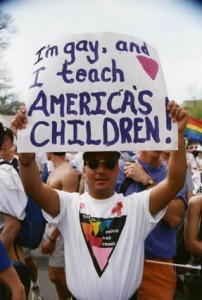
LGBT teachers are less likely to challenge homophobic behavior or language in the classroom or in the staff room, according to a new study.
The study, which surveyed 350 teachers and school principals, found that gay and lesbian teachers are less likely than their heterosexual counterparts to discipline students who engage in homophobic bullying. LGBT teachers as a whole were also less likely to challenge homophobic language or slurs when they are used in the classroom.
“Often, LGBT educators are less likely to say something in response to homophobia, because then they might be perceived as gay,” said Dr Tiffany Wright of Millersville University, who conducted the study. “They’re fearful for their job, or fearful of the repercussions of being seen as gay.”
In the staff room, 59 percent said they have heard teachers use homophobic language, and two-thirds said they have rarely or never seen other teachers intervene in such a situation. LGBT teachers also did not feel comfortable coming out to their students, with 62 percent saying that they did not do so out of fear of losing their jobs. More than half also said that they did not feel comfortable being out when interacting with students’ parents.
In her research paper, Wright uses her own teaching experiences as an anecdote, suggesting that teachers’ perceptions are colored by their own youth. “We grew up in an era when gay equalled bad,” she said. “That’s so ingrained in so many people. We’ve made a lot of progress since then, but the language has just been pervasive.”
Other studies have shown that the use of homophobic language such as “that’s so gay” can cause serious health consequences for LGBT students. In the Gay, Lesbian, & Straight Education Network’s 2011 school climate survey, nearly 85 percent of students said that they had heard “gay” used in a negative way, and over 70 percent said they heard homophobic remarks often in school. Nearly 82 percent reported verbally harassment, and nearly 40 percent reported being physically harassed.
